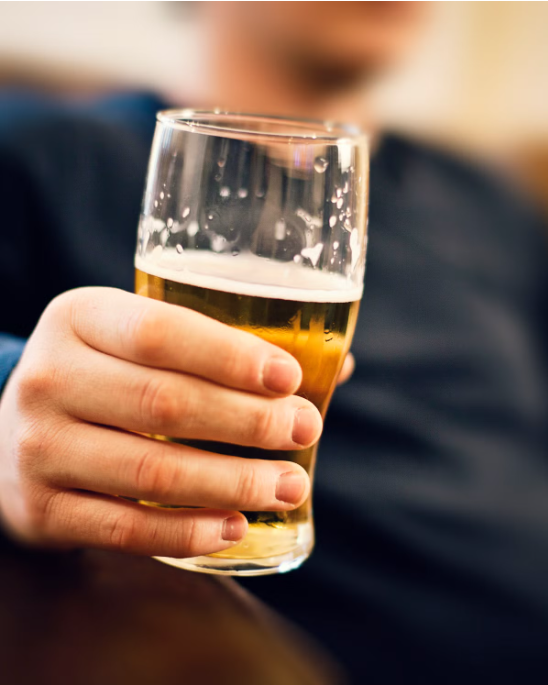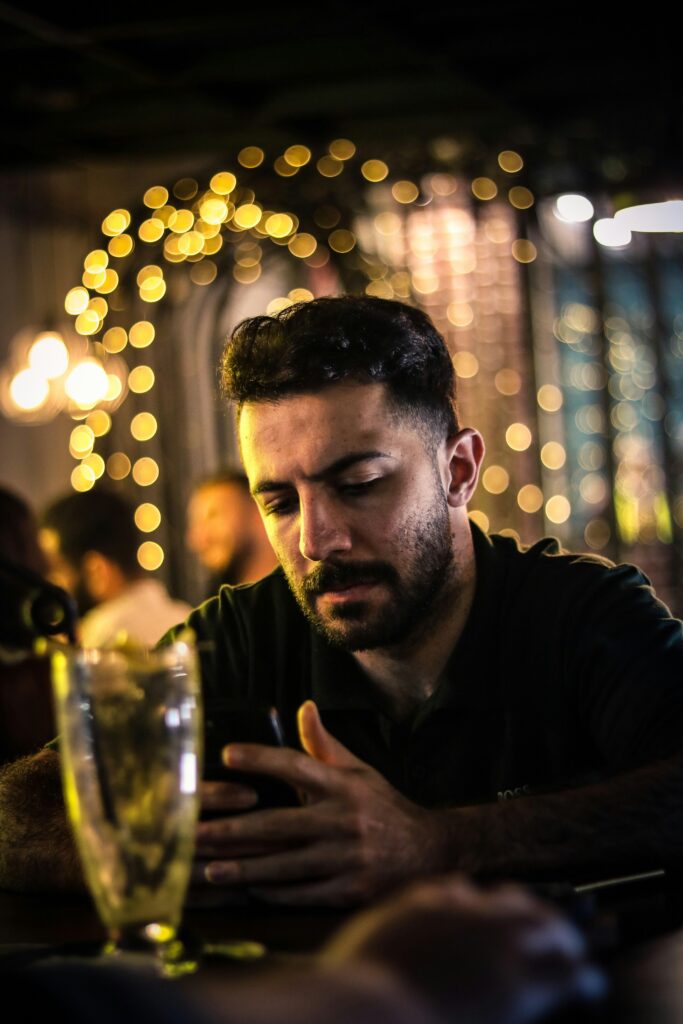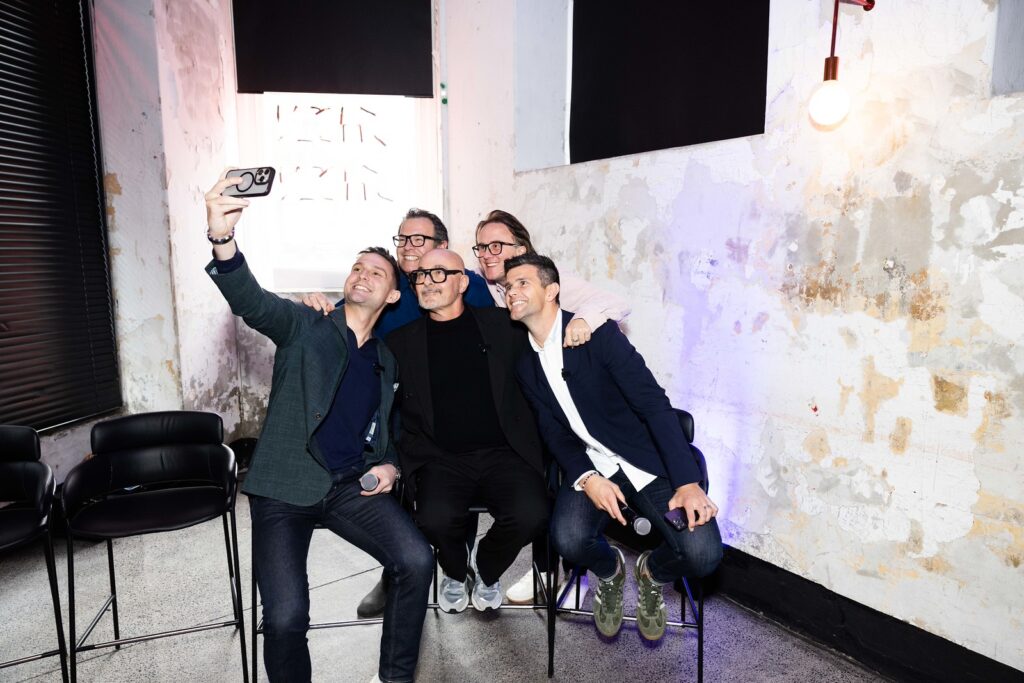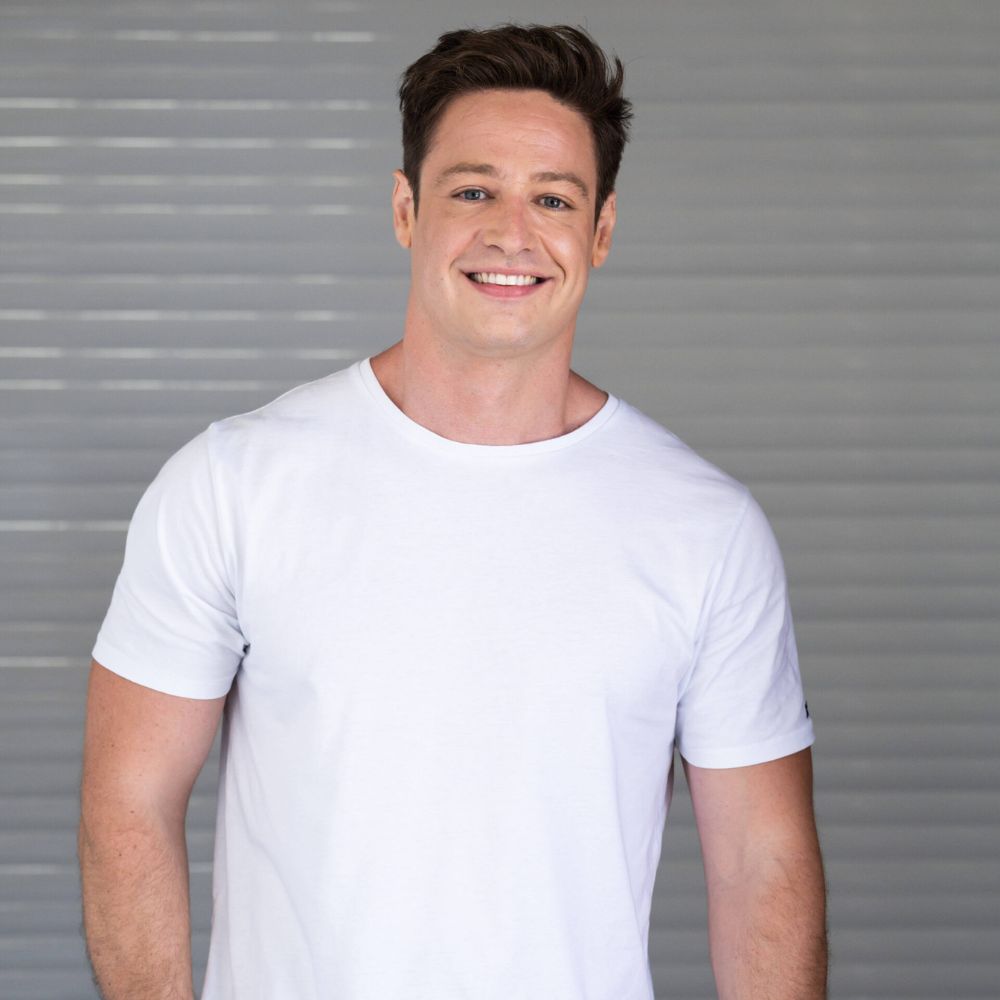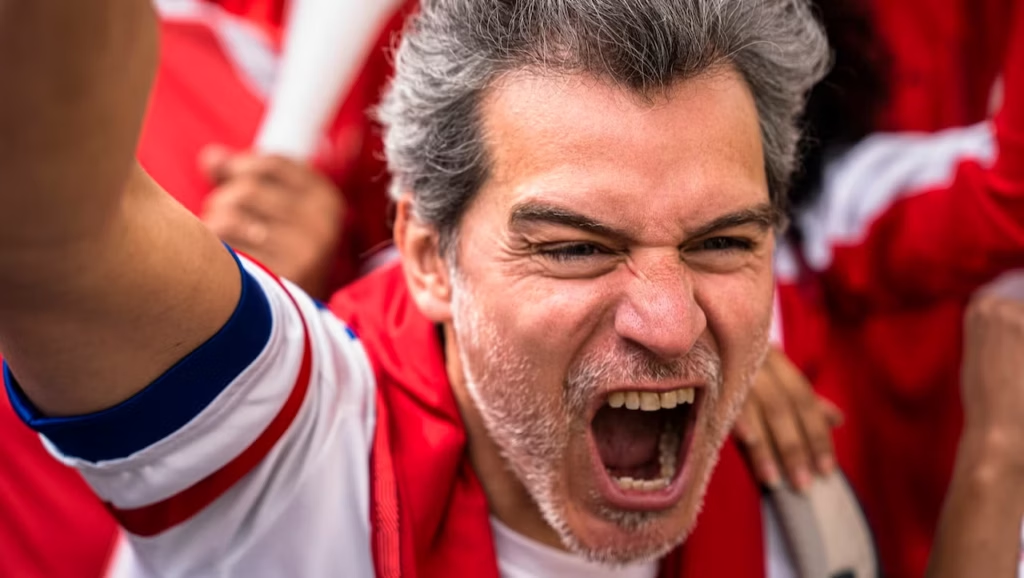The challenges make Survivor look like a luxury resort. The language is expletive-laden, with one-liners delivered with the kind of quip you’d expect of a top comedian tasked with bringing down an audience heckler. The recruits are eager, albeit psychologically and physically far removed from their comfort zone, and the setting is both picturesque and brutal: choppy waters, dense bushland, the unrelenting heat of the Australian sun. Shows like Goggle Box tend to suggest that the universality of TV viewing is the attitude of the armchair umpire; we like to think we can be out there, taking on the top contenders, that we’d have the physical strength and social skills required to emerge victorious. But SAS Australia defies conventional wisdom. To watch SAS Australia is to confront your fears in real-time viewing. From heights to cold water immersion and crawling through a claustrophobic muddied hole that grows ever more narrow with each passing wriggle, few shows manage to hold a mirror up to our own weaknesses like this one.
As many of us accrue empty days on the calendar with little to mark the passing of time, SAS Australia has been something of a lockdown salve. We’ve sat glued to the television screen in the recent weeks since it’s aired, our reactions to challenges shared with friends and family via WhatsApp commentary. But as those watching will know, the show isn’t just one that looks to break celebrities down for our own viewing pleasure. These are real people and, not surprisingly, the emotional response generated is one that is deeply personal and profoundly human. They are concerns we’ve all had, insecurities we might not have spoken aloud but come to find within ourselves, these are the long exhales that rattle the soul. And so the breakthroughs and triumphs are to be celebrated, a reminder that no matter our age or gender, we still have the power to surprise ourselves. It’s something Dr Dan Pronk knows all too well. His resume might be an intimidating one, an indication of the grit and determination Dan seems to exude with ease, but it’s also one that speaks overwhelmingly of resilience: of the ability to adapt, to fail at times and still continue forward.
Where the new norm of Zoom calls and Microsoft Teams interviews threaten to take the last traces of connection out of all conversation, Dan is disarmingly present. Even on the phone, where lack of visual aid tends to see awkwardness thrive, his voice is warm, friendly, excited by the topic at hand. You get the impression that this is a man who many would have been quick to count as an ally. Having studied medicine on an army scholarship, Dan qualified as an army doctor before completing SAS selection and moving into special operations. He served in this role for five years, completing four tours of Afghanistan in the process. But it wasn’t until Dan was discharged that he came to better understand the resilience that had been inculcated in him during that time.
“Before I left the army, I hadn’t really foreseen the challenges, the transition. All I’d seen was that I’d made the decision to leave after my wife had our third child,” Dan reflects. “I’d just got back from my fourth tour of Afghanistan and decided, ‘hey, that’s enough.’ And it was, it was time. So I discharged, but all I’d foreseen was that I’d be home more, I’d be with the family more, I’d be safer than ever.”
Within six months of discharging, the trauma Dan had experienced in his role within the military caught up with him and he found himself highly anxious and agitated at home. “On paper, life was better than it had been for a long time and yet here I was having, from a mental perspective, a worse time than ever. That was what for me as a doctor piqued my interest into looking at what was it about being with the army that was so protective, and what I had lost when I discharged that left me vulnerable to the cumulative stress.”
It was this deep dive that led to The Resilience Shield, a book Dan co-authored alongside his brother, Ben Pronk and Tim Curtis. Purely by circumstance, the book came to be published at a time where individual resilience was under attack. As much of Australia grappled with the outbreak of the Delta variant, many of us found ourselves enduring an extended lockdown with little hope to hold onto. The daily onslaught of case numbers and hospitalisations became mentally draining, compounded further by restrictions that not only saw our social lives falter, but our physical fitness too. Covid-19 may have been a global pandemic, but it’s far from the great equaliser: some have been able to trade an office for a home work space, others have been without work and financial support for months. How do you keep going in times of such uncertainty with no countdown, no end date to suffering, in sight? As Dan will tell you, it’s a matter of just going always a little further.

Men’s Health: Many will be familiar with your military background, but was the army always on your radar even at a young age?
Dr Dan Pronk: My dad was an army helicopter pilot and my brother Ben and I grew up with an army family. We had that exposure from an early age and the military was demystified if you like, we had some idea of what was involved. My brother was always going to go into the army from an early stage. I was never that way inclined. Throughout my teenage years and through my early 20s actually, I was pursuing other interests. I did a bit of University, did an exercise science degree and was trying to have a go at being a professional triathlete in my late teens, early 20s.
When that became clear that that wasn’t going to be a career for me, I started to look at other options and that was the first time that the army looked like a good option for me. I had sat the medical school entrance exam and managed to pass that. The army had a scholarship scheme to pay your way through medical school and so I managed to get one of those scholarships and that was how I started down my army pathway.
I imagine that if you’re pursuing something like triathlons, that involves years of dedication and a single focus. From your experience of stepping away from that, how were you able to recalibrate your purpose and find fulfilment in something else? Was that an easy transition?
It was very difficult. It was devastating at the time to make the realisation that I simply was not good enough to be the athlete that I wanted to be. When I made that realisation and moved away from pursuing triathlon, I lost a purpose in my life that had been there – a really strong drive – for many years. I’d lost purpose and needed to recalibrate and reinvent myself and reset goals. Medical school was of course a fantastic goal and a great privilege to have the opportunity to go and study, and also a good challenge from a mental perspective. But what I was missing was that physical component that had gone when I’d stopped competing as a triathlete.
It was when I discovered the Special Operations and SAS regiment which I became aware of through my brother who, by the time I was in medical school, had gone through his military officer training and had gone and done SAS selection and was a junior officer for the SAS regiment, so I became aware of that and all of a sudden the goal was there again.
What is the SAS selection process actually like?
It’s a hellish three weeks by design. It’s probably one of the best tests of psychological and physical resilience that’s around. From that perspective, it was a fantastic challenge, it was hugely ambitious and was a great motivator for me.
In The Resilience Shield you write about how your experiences on the battlefield really fuelled this desire to explore the topic of resilience. But when you’re a recruit and in the SAS, is resilience something they teach you along the way or are the skills learned through action?
I can see now that a lot of what was inherent was being trained up and going through the selection course and then going through the further training with the SAS regiment and then being part of the organisation. All of the individual components of that like the feelings of self-fulfilment, the feelings of advancement, of accomplishment, of self-esteem, of having a purpose, of doing something that was bigger than us as individuals, being part of something bigger, and particularly as a doctor with the organisation, feeling that I could use my medical skills in an environment that was really complex and oftentimes life and death and that you could intervene. It gave me a huge amount of purpose and the physical demands of the job also meant you had to be really fit.
When we started to look at the literature in resilience and all the things that aligned and were causative and correlative, we realised that a whole bunch of them were wrapped up in being a member of an organisation like the SAS regiment. We were subconsciously being built into these resilient people and a resilient organisation, but none of it was like ‘we are doing this to build resilience here.’
The other piece of it which I found when I discharged and I think a lot of soldiers do, and a lot of elite sports people, is you can fall into the trap of what’s called contingent self-esteem or identity fusion, where you become one with your role and don’t know who you are outside of that role. A lot of the underpinnings of my resilience were based on me being a doctor with the SAS regiment, and when that was going well I felt good about myself and I was resilient, but it wasn’t until I discharged from the army and all of a sudden I was out of that and had a bit of a loss of purpose. I had to work out who I was again.
Once I started looking into literature and seeing all these factors that we know are causative of resilience and that I had when I was with the army, it formed a sort of roadmap for me to realise that if I can recreate these things for me in other areas of my life as a civilian, I could get back to a stable state of mental health.

The Resilience Shield has resonated with so many readers; it shows that resilience and mindfulness – these are topics that are universal and don’t discriminate based on age or occupation or gender. Why was it something you wanted to write and did you expect it to resonate with so many people?
For me, writing has always been a very cathartic process. After my second tour of Afghanistan, we’d lost a few guys on that tour that I’d responded to and couldn’t save and I was struggling to make sense of all of that. In one of my post-op psychological debriefs, the bloke had said, ‘Hey, have you thought about writing this stuff down to just help make sense?’ That set me off on this writing and journalling, so it was something I always enjoyed. In the fallout of being discharged from the army, I was needing to write a summary of the literature and codify what was happening.
I started to blog a little bit and get involved in social media and it did seem to resonate with people so that in itself was very gratifying to think that I could maybe, through my own experience, help someone else. As I started to work with Ben and Tim, we started to realise that these concepts of stress and the body’s physiological and psychological responses to stress and the concept of resilience, are universal. It doesn’t matter if your stress is gunfighting in Afghanistan, or it’s the stress of being a busy accountant, or a student, or a University doctor, or a journalist with a deadline or parent with young kids that are up all night. It doesn’t matter: stress is stress. And the body will react in predictable ways from a physical and psychological perspective. And resilience is resilience, so how you counter that stress – you can build that in the same manner.
You use a phrase in the book that I particularly love: ‘always a little further.’ Can you explain the origins of this and how it applies to everyday situations?
That “always a little further” comes from a poem by a bloke called James Elroy Flecker and the poem’s called ‘The Golden Journey to Samarkand’ and it’s in reference to this caravan travelling overland in Central Asia. There’s a group of pilgrims, these ragged pilgrims, and one of the quotes from the pilgrims is, ‘We are the pilgrims master, we will go always a little further.’ It’s a mantra that has relevance to the British SAS regiment.
But it’s just a fantastic mantra and I think particularly in this day and age of social media and these one-minute curated Instagram posts and Facebook posts of these fantastic things or beautiful people, or these amazing feats – basically these highlight reels – what gets lost is all the effort that goes into that. This mantra of “always a little further” is how you achieve excellence. It might not be sexy, but it is the day in, day out, small, habitual, incremental changes that eventually add up to something big.
One of the things to come out of lockdown is the importance of mental health. At a time where many of us are now looking to our mental health as a priority, is resilience something that can be trained?
Absolutely. The Resilience Shield describes in detail the individual layers of resilience. We use these layers but we treat them individually so we can address them at a granular level – so there’s your innate layer, nature and nurture plays into your resilience, your mind layer comes next and it is fundamental, so things like mindfulness and meditation, spirituality, anything that bolsters your mind layer. There’s your body layer, your health and fitness; your social layer, social engagement outside of work is what we consider the social layer; your professional layer, so that’s the social engagement within work but also the work you’re doing and whether you feel fulfilled and whether it’s congruent with your values and all these things like work environment, and then we surround it with adaptation, which is the ability to face up to novel challenges, to be confident to approach a challenge that was unforeseen or you’ve never encountered before and couldn’t possible have trained to be resilient against.
We know we can build resilience, we know that resilience is dynamic, we know that it’s multifactorial but most importantly, we know that it’s modifiable. If you know what to be doing on a day to day basis, you can build your resilience across all of these layers of the Resilience Shield, and they’re all interwoven so they don’t act in isolation. Yes, absolutely resilience can be built, and it is that whole “always a little further” across all the layers of your Resilience Shield that will give you a more robust overall resilience.
In your research and study of the literature surrounding resilience, were there any aspects of that surprised you?
What happened with our initial survey was when we thought that all the different layers would contribute evenly, the mind layer broke the survey. It was so important that it did just trump everything else. This was fascinating because we all know that if you keep yourself fit, if you sleep heaps and eat well and if you exercise, socialise and are happy in your work, we know that you’re going to be resilient. But no one has time to do everything perfectly, so if you have to focus in and hone in on one activity, then mindfulness meditation came out to be the thing that moves the levers the most on overall resilience and the mind layer in general.
The second thing that was really quite interesting was sleep. When we looked at the sub-elements of the body layer – things like diet, and exercise and body mass index – sleep, in terms of the body layer, was exponentially more important than other things.

A lot of this advice you impart on the recruits in SAS Australia and we saw that in your exchange with Kerri Pottharst and this idea that we are only competing against ourselves.
What is your advice for those who are perhaps trapped in that mindset of comparing themselves to others, or are looking to external motivators while diminishing their own experience relative to someone else?
There’s another really famous quote called the ‘Desiderata’ by a bloke called Max Ehrmann. My brother and I grew up with this on the back of our toilet door, so for decades growing up. One of the lines in that, it says: “If you compare yourself with others, you will become vain and bitter for always there will be greater and lesser persons than yourself.” It really talks to this idea where your only competition should be yourself yesterday. We saw this in the military SAS selection course and this was the point I was trying to impart on Kerri. She’s a hugely accomplished woman, she got a gold medal in the 2000 Olympics as everyone knows for the beach volleyball.
What I was trying to convey to her was that it’s not about competing against the person next to you, it’s about competing with yourself and just pushing yourself beyond what was previously your preconceived physical and psychological limits and that’s what success looks like. You can’t control how fit someone else is or what someone else is going to do, all you can do is focus on your own, take that intrinsic focus of control, focus on yourself, try not compare yourself to others, and just do your best. And gratitude plays into this. Being grateful for what you have and trying to focus on what you do have and being grateful for it rather than being resentful for what you don’t have.
SAS Australia has been a lockdown salve for so many watching at home but every episode now the recruits seem to be covered in more bandages and scrapes. From your experience, what are some of the most common injuries you’re having to deal with and treat on the show?
The course is real and I’ve been asked this many times, whether it’s all staged or choreographed. I mean, it’s a TV show but within that this is a 24/7. These recruits are in a bubble of stress no different than what is created on the real SAS selection course. It’s ambiguous, it’s tough, it’s physically demanding, it’s psychologically demanding, the food and sleep is deprived a little bit on both of those things. And they’re constantly on edge. They don’t know what’s coming up; it all creates this stress bubble if you like.
People will have seen some of the activities they have them doing: they’re down on their hands and knees, they’re crawling through things, they’re bruising their knees, bruising their elbows, they’re ripping up their knees and elbows, lots of them have turned up to the course all blistered because they get their boots shortly before the course and they’re trying to break these boots in so a lot of them have these terrible blisters before the course even began. Some of them were carrying injuries from previous sport injuries or life in general, so they came in with these injuries. I take my hat off to these people, they come in with these pre-existing injuries and feet full of blisters from the boots before they even start.
There’s a lot of yelling from the DS Staff on the show, but as we’ve seen throughout the series, there are also incredible moments of personal growth and emotion. What do you find to be the most rewarding part of being involved with SAS Australia?
It’s seeing the personal growth and universally, all of the recruits coming off that course, as soon as they were out and that pressure was removed and they had a chance to have that emotional release and get used to the idea that it was over, they universally said it was ‘one of the best experiences of my life’. We see the directing staff behaving as they do, and it’s very deliberate and it’s necessary to create the stress required for the recruits to have the experience that they’ve come on the show to experience. It looks terrible and it looks brutal – and it is. But that’s very deliberate. If it wasn’t that overwhelming stress, then you wouldn’t be pushing people beyond their limits. We’ve got Olympic athletes on the course, we’ve got professional football players, we’ve got people who have been in high-stress, high consequence environments, and you need to create something that pushes even them further than they’ve been pushed before and that’s not an easy thing to do so that’s what the DS are doing. There’s a very deliberate method to the madness.
But from my perspective as the doctor, it’s nice to not have to be one of those DS screaming and creating that stress. It’s a really privileged position to be there as the ally of the recruits and try help them and manage them to get as far as they can on the course. But then, to be able to see them as they come off the course once the dust has settled on their initial withdrawal or removal, to see them say, ‘Wow, that was just unbelievable. A once in a lifetime experience’ is really rewarding.
It’s a show that really celebrates growth – not just physically, but mentally and emotionally too. For those watching at home who are looking for that kind of personal growth, is it a case where you have to throw yourself out of a helicopter and into the ocean just to facilitate the same response?
What you need to be doing incrementally and in small, safe ways is just edging up on the limits of what you used to think was your physical or psychological boundaries and that will depend on your starting point. Everyone’s going to have a different reference point there, it doesn’t need to be swinging out of helicopters, or firing assault rifles, or hopping in ice baths – that’s not necessary. This is just getting out of your comfort zone in a safe manner, try pushing yourself a little further, picking up the phone and ringing that boy or girl that you’re interested in, doing stuff that makes you nervously excited but isn’t overwhelmingly stressful. And it’s just about pushing those boundaries always a little further and incrementally that adds up overtimes.
What are the key takeaways you want readers to get out of The Resilience Shield?
Too often in life we go along and we have a stress event that puts us in a bad state of mental health. We wait for the machine to break before we do an intervention to bring us back up to a baseline level of mental health. What we propose is rather than waiting for the machine to break, if you can understand how to build resilience which is what the whole premise of the Resilience Shield model is telling. You want in granular detail what you can be doing day-to-day, and developing a thing called the Resilience Action Plan which is specific to an individual to be able to look at areas of relative strength and weakness within your overall Resilience Shield. If you can develop a Resilience Action Plan and start working at your areas of relative weakness in your resilience, you can build that ahead of the stressful event and ride it out much better.
This interview has been edited for length and clarity.
SAS Australia airs Monday-Wednesday 7.30pm on Channel 7 and 7plus. To find out more about Dr Dan Pronk, you can follow his social media here. The Resilience Shield is available at select retailers here.








